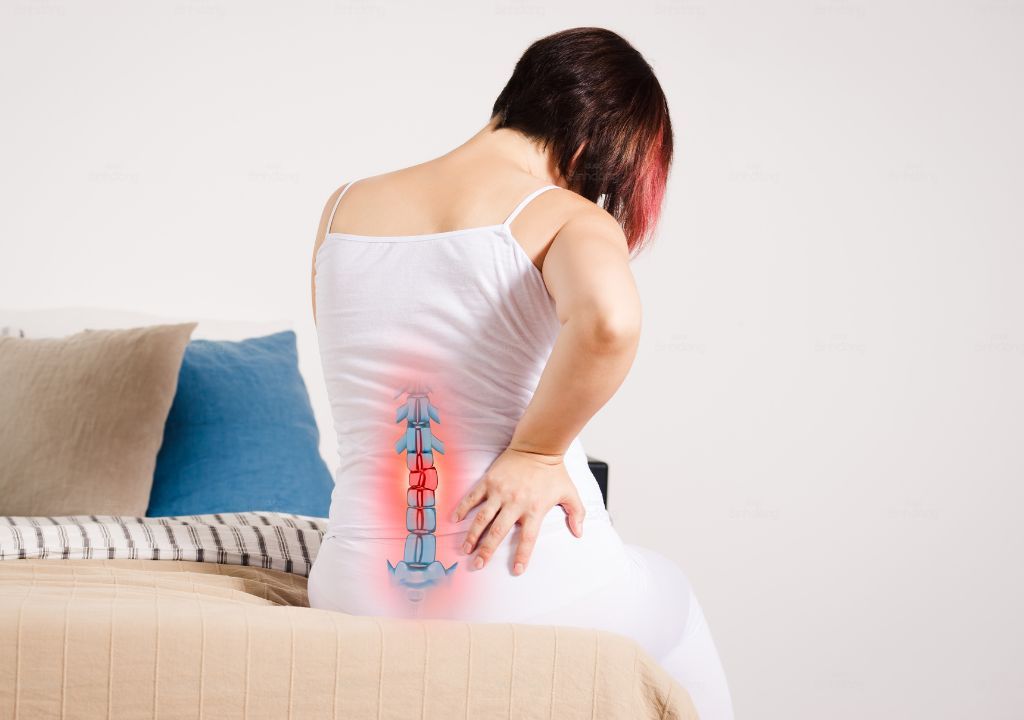
Hình ảnh người phụ nữ đang bị đau thần kinh tọa
Understanding the Sciatic Nerve and Why It Hurts
The sciatic nerve runs from the lower spine through the hips and buttocks and down each leg. When compressed or irritated—often by a herniated disc, tight muscles (such as the piriformis), spinal misalignment, or inflammation—it can cause:
-
Radiating pain from the lower back to the legs
-
Numbness or tingling
-
Muscle weakness
-
Difficulty standing, walking, or sitting
These symptoms can range from annoying to disabling. Traditional treatment options include painkillers, anti-inflammatory drugs, steroid injections, or even surgery. However, these methods often carry risks, side effects, or only offer short-term relief.
Why Massage Therapy Works for Sciatica: A Scientific Perspective
Therapeutic massage is gaining recognition in medical communities because it addresses underlying contributors to sciatic pain—not just the symptoms. Here’s how it works:
1. Reduces Muscular Compression on the Nerve
Tight muscles in the glutes, lower back, or thighs can compress the sciatic nerve. Massage techniques like trigger point therapy and deep tissue massage release muscle tension, allowing the nerve to move freely.
2. Improves Nerve Function
Massage stimulates mechanoreceptors in the skin and fascia, which can override pain signals according to the gate control theory of pain modulation. This calms the nervous system and reduces hypersensitivity.
3. Promotes Blood and Lymphatic Circulation
By improving circulation, massage helps reduce inflammation and supports the body’s natural healing response. Oxygen and nutrients reach damaged tissues more efficiently, and waste products are removed more quickly.
4. Interrupts the Pain-Spasm Cycle
Sciatic pain often triggers muscle guarding, which causes more compression and pain. Massage breaks this cycle by restoring normal muscle tone and flexibility.
5. Boosts Mental Well-being
Living with chronic sciatic pain can lead to anxiety and depression. Massage therapy reduces cortisol levels, promotes endorphin release, and supports parasympathetic nervous system activity, leading to greater relaxation and better sleep.
Types of Massage for Sciatic Pain: Which One Is Right for You?
Not all massage styles are created equal when it comes to sciatica. The most effective modalities include:
-
Deep Tissue Massage: Targets deeper layers of muscle and fascia to relieve chronic tightness.
-
Trigger Point Therapy: Focuses on “knots” or hyperirritable spots that refer pain down the leg.
-
Myofascial Release: Gently stretches the connective tissue around muscles to improve mobility and reduce nerve entrapment.
-
Neuromuscular Therapy: Uses specific techniques to balance the interaction between nerves and muscles.
-
Active Release Technique (ART): Combines movement with massage to treat scar tissue and soft tissue restrictions.
-
Manual Lymphatic Drainage (MLD): Reduces swelling and inflammation around irritated nerve roots.
Working with a trained massage therapist who understands these methods ensures personalized treatment tailored to your symptoms and root cause.
Massage vs. Other Sciatica Treatments: A Comparison
| Treatment | Pros | Cons |
|---|---|---|
| Massage Therapy | Non-invasive, relaxing, treats root causes | Requires multiple sessions, results may vary |
| Medication | Fast relief | Temporary, potential side effects, dependency |
| Steroid Injections | Reduces inflammation | Invasive, risk of tissue damage, limited use |
| Physical Therapy | Strengthens support muscles | Requires time and consistency |
| Surgery | Can resolve structural issues | High risk, long recovery time |
Best approach: Combine massage therapy with physical therapy and lifestyle modifications for long-term success.
How Often Should You Get a Massage for Sciatica?
The frequency of massage depends on the severity and duration of your symptoms. A typical plan includes:
-
Acute phase: 2 to 3 sessions per week for 2–4 weeks to address inflammation and severe pain
-
Recovery phase: 1 session per week as symptoms improve
-
Maintenance phase: 1 session per month to prevent recurrence
Regular evaluation and communication with your therapist will help refine the treatment plan as your condition evolves.
What to Expect During a Sciatica Massage Session
A quality massage therapist will begin by:
-
Reviewing your medical history and symptoms
-
Performing a basic physical assessment
-
Identifying trigger points or areas of muscle imbalance
-
Creating a customized plan for your needs
Sessions typically last 60–90 minutes and may include guided breathing, stretching, and home-care recommendations.
When Massage May Not Be Appropriate
Massage therapy is safe for most people, but certain situations require caution or medical clearance:
-
Acute infections
-
Uncontrolled blood pressure
-
Blood clots or DVT
-
Cancer (depending on type and stage)
-
Severe osteoporosis
-
Recent surgery or spinal fractures
Always consult your physician or neurologist if you’re unsure whether massage is right for your condition.
Making the Most of Your Recovery: Integrating Massage with Self-Care
Massage is most effective when combined with other healthy habits. To maximize your results:
-
Do daily stretching and strengthening exercises (especially for the core and hips)
-
Practice good posture at work, while driving, and while sleeping
-
Avoid prolonged sitting—stand or walk every 30–60 minutes
-
Maintain a healthy weight
-
Use heat therapy or foam rolling between sessions if recommended
Your therapist may also suggest ergonomic changes at home or work to reduce future nerve irritation.
Conclusion: Invest in Your Long-Term Comfort
Sciatic pain doesn’t have to be a lifelong struggle. With the right combination of therapeutic massage, lifestyle changes, and professional guidance, many individuals experience significant and lasting relief.
If you’re seeking a natural, evidence-based solution to your sciatic pain, consider booking a session with a licensed therapeutic massage clinic. Relief is possible—without relying solely on pills or surgery.
